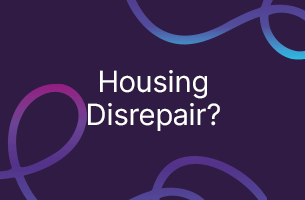Posted by Oliver Hanmer, director of supervision at the Bar Standards Board
At the beginning of the year we launched a whole new strategy for supervising chambers – based on identifying existing risks in the way in which chambers run their businesses and responding proportionately. In my many years at the Bar Standards Board (BSB), this is a different way of doing things, done by a fresh team.
This new approach is a key pillar as we continue to construct a new, targeted and preventative approach to regulation, and become an ever more modern and efficient regulator. We wanted to help to foster a more constructive relationship between the BSB and those who we regulate. In turn the new approach will help better protect the interests of clients by preventing potential risks within chambers snowballing into real problems.
In practice, this means targeting more of our resources at those chambers and individuals that require more attention. To help us do this, in April 2014 all chambers had to complete an impact audit survey, which measured the potential impact of various risks, should they materialise at a chambers.
For example, the impact of poor complaints-handling processes would be worse at a chambers with a large base of vulnerable lay clients than at a chambers with a small base of corporate clients. Depending on their answers to this survey, chambers were grouped into three impact categories: low, medium and high.
After this, we issued in July 2014 a ‘supervision return’ form to high-impact chambers (and will do so in January 2015 for those in the medium category), giving them an opportunity to explain how effectively potential risks are being managed. The returns help us to assess the likelihood of these risks actually materialising and to establish the level of supervision chambers might need.
Chambers that seem to manage risks effectively – categorised as low risk – will be largely left to get on with it and receive relatively little supervision attention. This leaves us free to work more closely with those chambers that appear to manage risk less effectively to address these issues without needing to resort to enforcement action.
Risk profiles of chambers will be revisited as a result of ongoing supervision or should information arise that suggests the profile should be raised or lowered.
My team will use the risk-based information from the impact audit, the supervision return and other sources to select and prioritise a list of chambers for supervisory action, including visits.
Before this could be rolled out, a sample of chambers was selected for pilot visits to test the programme. We have now published the findings of these visits and I am pleased to say that the results have been most positive.
Thirteen chambers were visited during the pilot. Six were selected on the basis of risk-based referrals from our professional conduct department; seven were selected randomly. Chambers received the visits positively and their staff appeared to appreciate a more constructive relationship with the regulator, working collaboratively to help improve chambers’ management of risk and compliance with regulatory requirements.
Some chambers told us they appreciated being able to have an open conversation about the issues that all chambers face these days. Others seemed pleasantly surprised when they realised that the aim of the visit was to help chambers improve their policies, procedures, and controls – and not to actively seek out potential breaches of the rules.
Said one: “I hadn’t fully grasped that the intention of the visit was to assist and help chambers. I thought it was to check what we might be doing wrong. However… it quickly became apparent that the BSB are offering assistance, guidance, and help.”
Anyone who is interested in the visits – how they worked, the sorts of actions that they raised, and what happened next – should read our report, available on our website.
For me, the visits have been a great success; they have enabled us to gather useful information about the various systems and structures that chambers employ to run their business. What has been very encouraging is that my team has seen very tangible improvements in the way in which chambers manage risk and deliver services.
I believe these visits could aid the spread of good practices, like more transparent complaints processes, across the profession.
We fully intend to continue to visit chambers. These visits will be informed by risk-based information gathered through the impact audit, supervision returns and other sources. The advantage of visits resulting from initial risk assessments is that the visit can be tailored to help address the particular concerns relevant to that chambers – before these concerns spiral into less manageable problems.
Moreover, underlying these visits is a new approach to regulation – one that is more bespoke, more preventative, and more in the best interests of the chambers, the regulator, and the client. I think we can all agree that is a good thing.













If only this approach were adopted over the whole field of regulation.